Abstract
Rats pressed a lever to avoid shock on a free-operant avoidance schedule. Some subjects were also exposed to extinction in which the response-shock contingency was eliminated while the shock-shock contingency remained in effect. A specially constructed lever was used that registered not only presses, but also biting attacks on the lever. Throughout various phases of the study, shocks often elicited lever biting as well as post-shock responding. The results suggested that shock-elicited attacks that are forceful enough to activate the operandum might account for some of the responding that occurs in experiments on free-operant avoidance behavior. In particular, shock-elicited operandum attacking might account for post-shock response bursting during free-operant avoidance and the extreme persistence of responding sometimes noted when shocks are delivered during the extinction of avoidance behavior. To the extent that this is true, these phenomena should not be characterized as operant behavior in interpreting the results of experiments on free operant avoidance.
Full text
PDF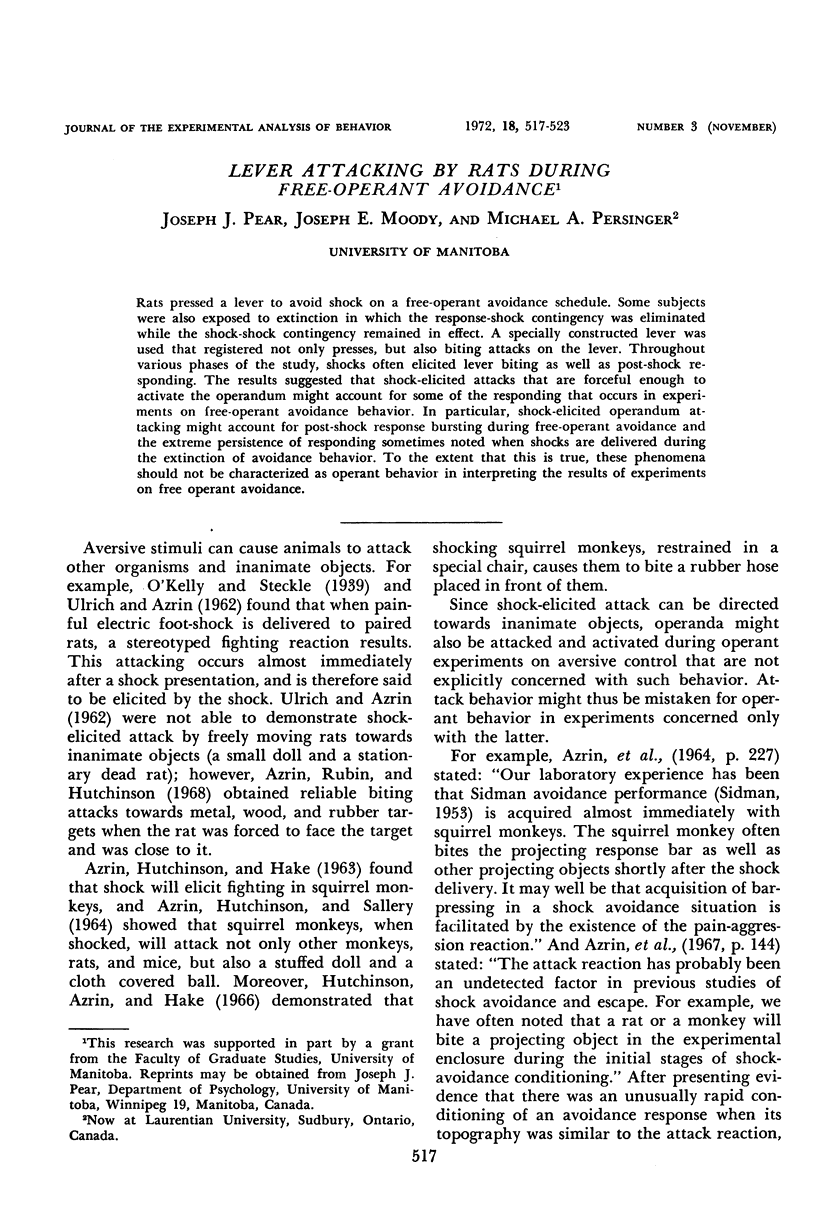
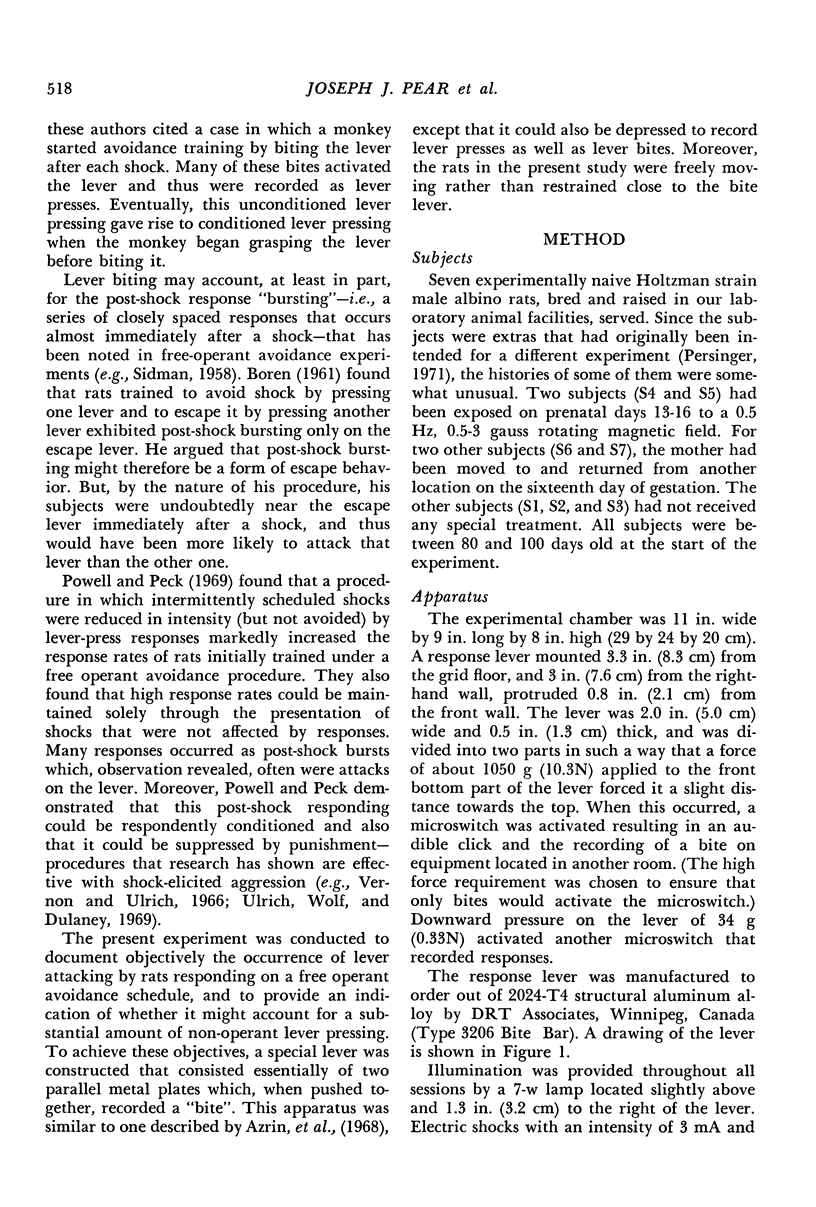
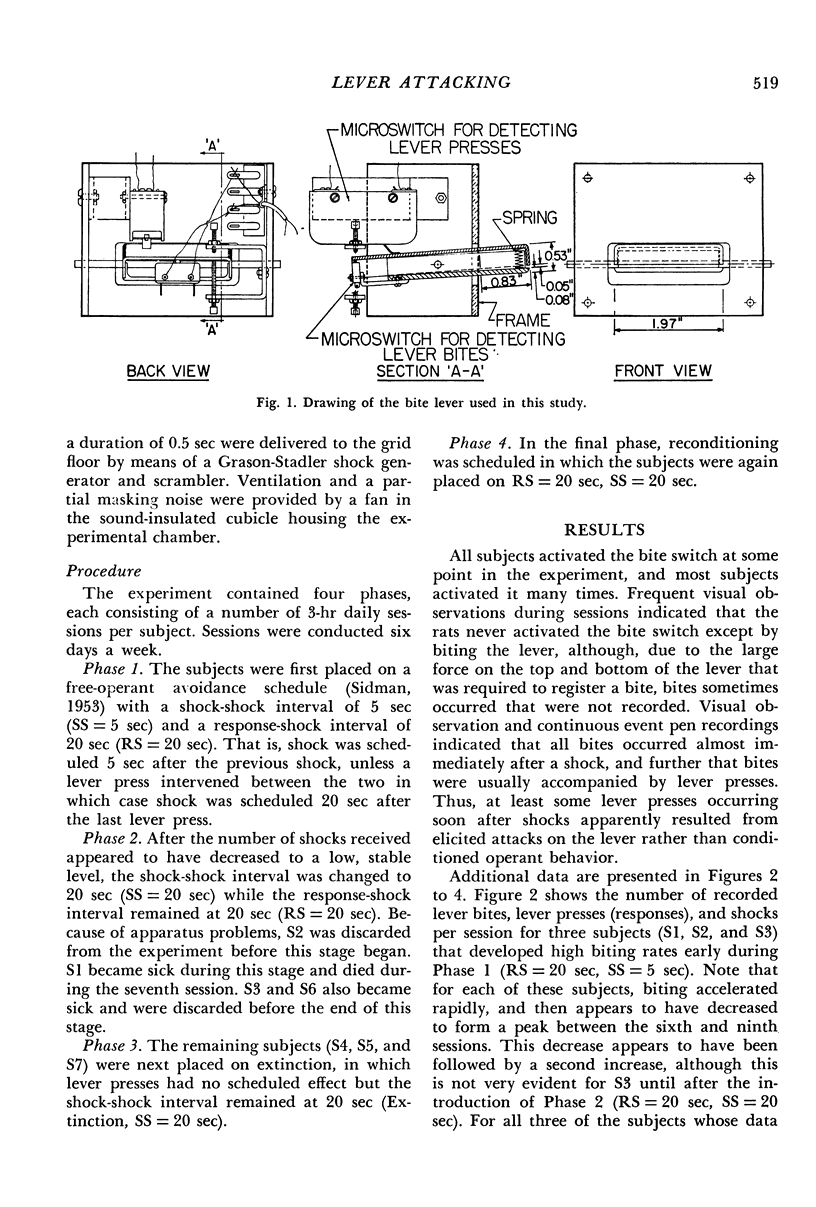
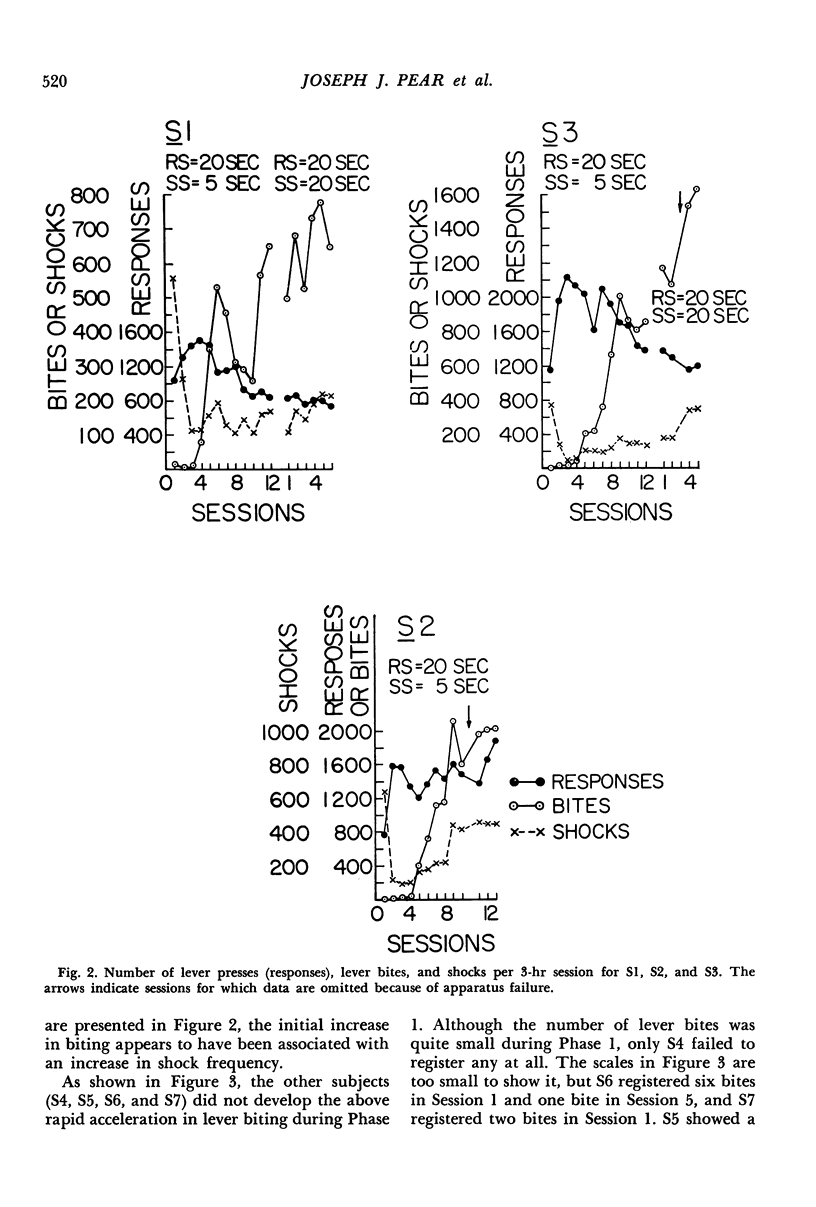
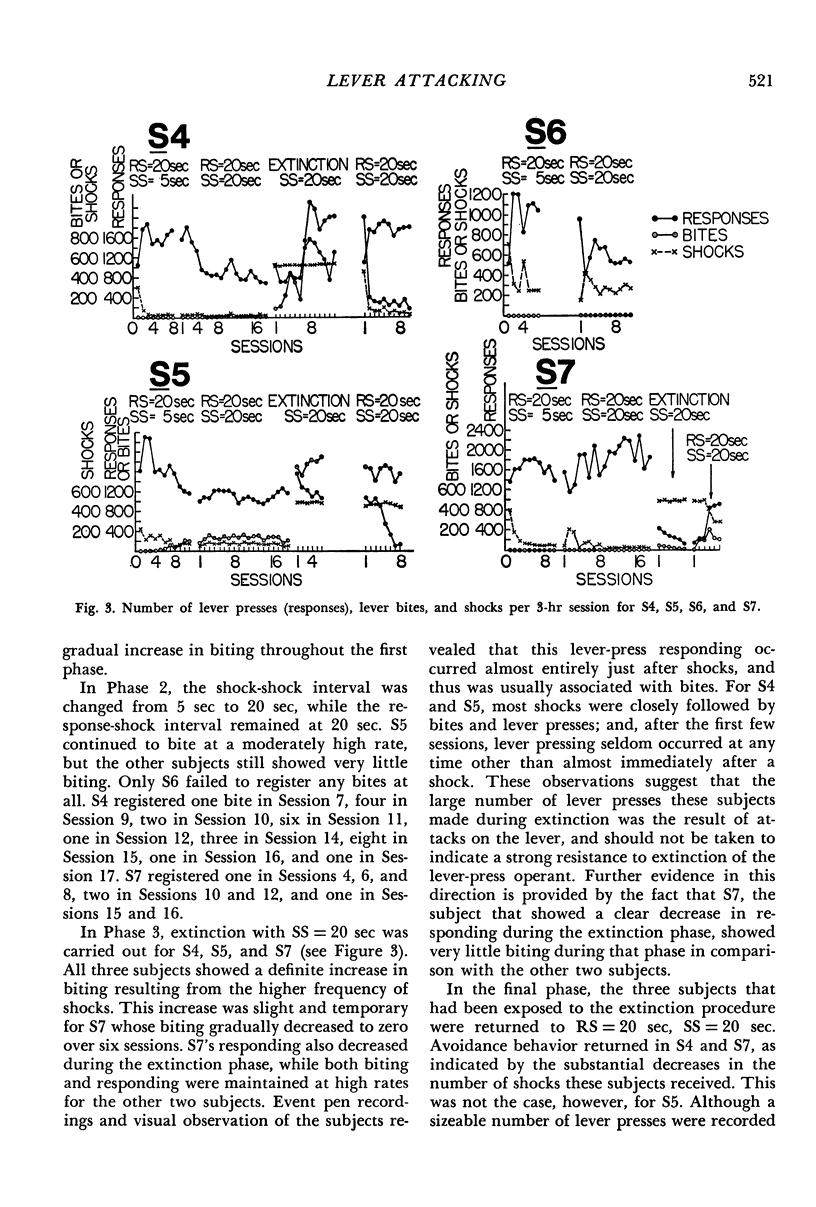
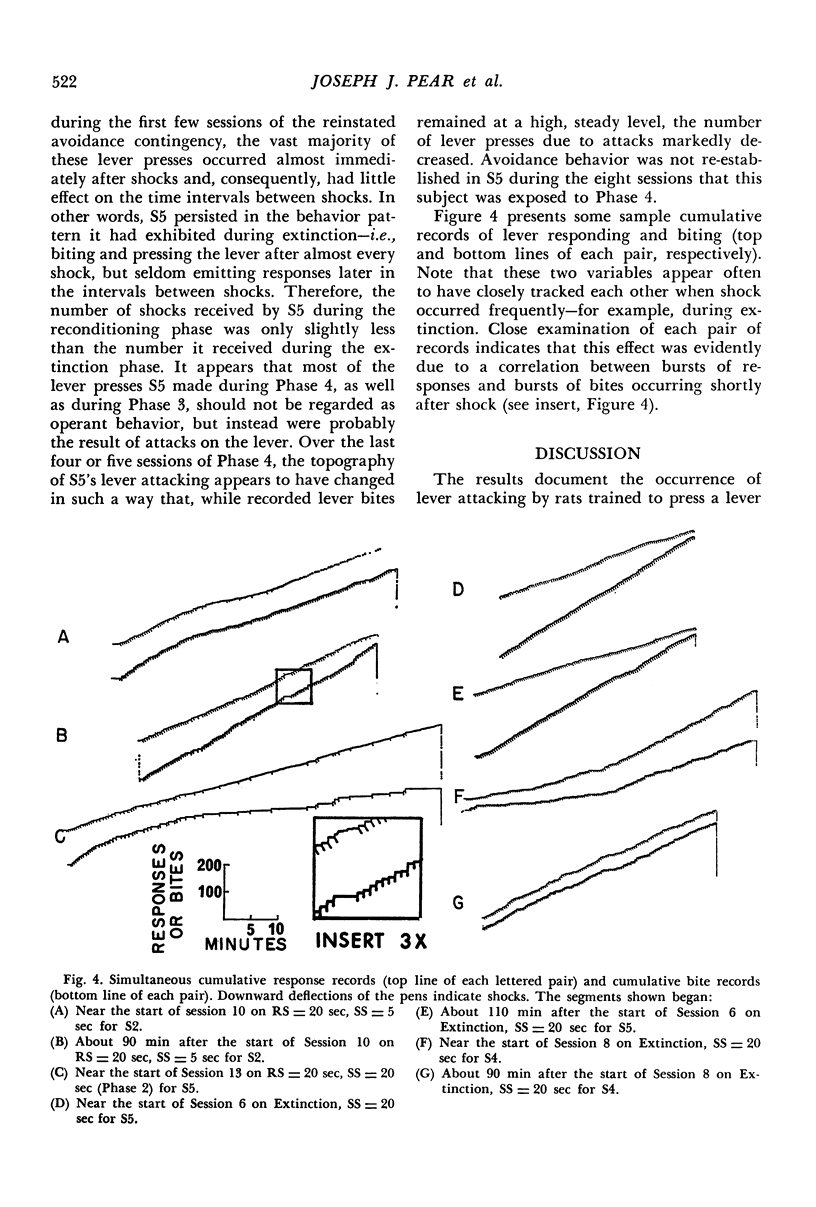
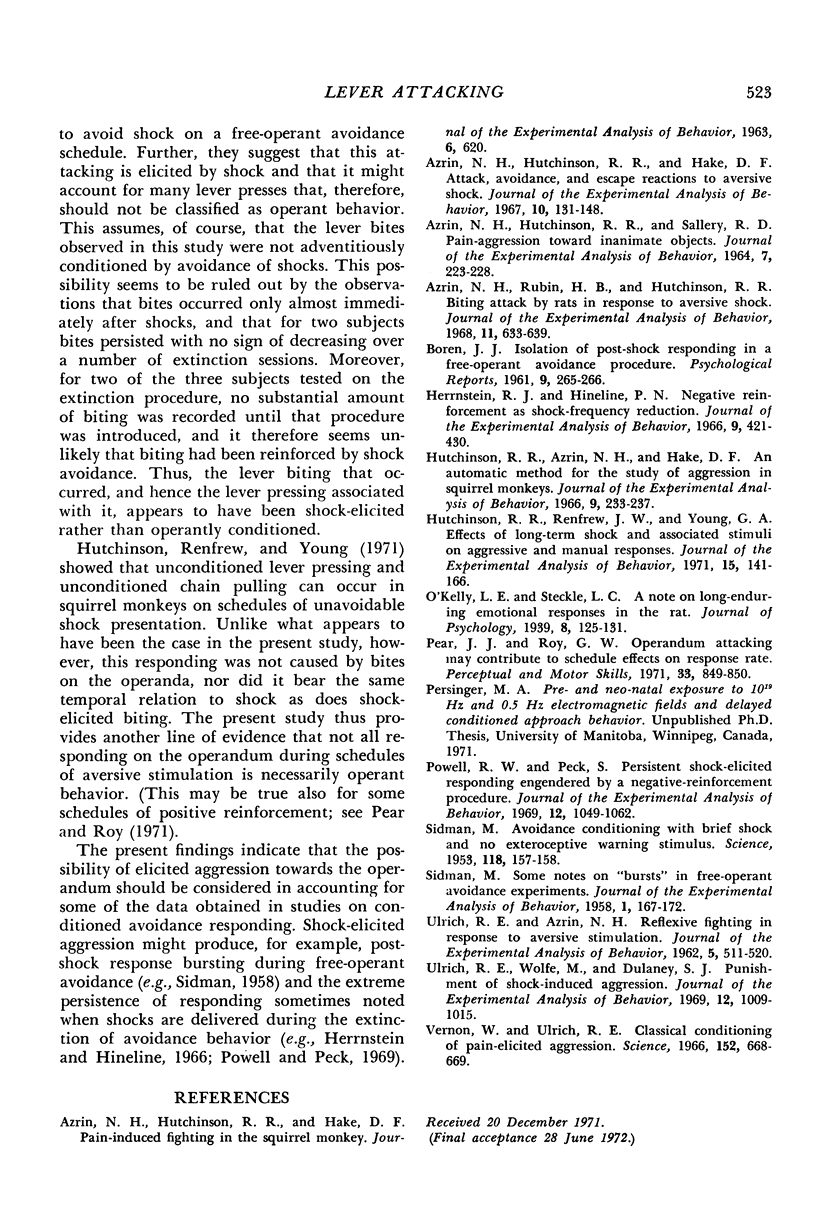
Selected References
These references are in PubMed. This may not be the complete list of references from this article.
- AZRIN N. H., HUTCHINSON R. R., HAKE D. F. PAIN-INDUCED FIGHTING IN THE SQUIRREL MONKEY. J Exp Anal Behav. 1963 Oct;6:620–620. doi: 10.1901/jeab.1963.6-620. [DOI] [PMC free article] [PubMed] [Google Scholar]
- AZRIN N. H., HUTCHINSON R. R., SALLERY R. D. PAIN-AGGRESSION TOWARD INANIMATE OBJECTS. J Exp Anal Behav. 1964 May;7:223–228. doi: 10.1901/jeab.1964.7-223. [DOI] [PMC free article] [PubMed] [Google Scholar]
- Azrin N. H., Hutchinson R. R., Hake D. F. Attack, avoidance, and escape reactions to aversive shock. J Exp Anal Behav. 1967 Mar;10(2):131–148. doi: 10.1901/jeab.1967.10-131. [DOI] [PMC free article] [PubMed] [Google Scholar]
- Azrin N. H., Rubin H. B., Hutchinson R. R. Biting attack by rats in response to aversive shock. J Exp Anal Behav. 1968 Sep;11(5):633–639. doi: 10.1901/jeab.1968.11-633. [DOI] [PMC free article] [PubMed] [Google Scholar]
- Herrnstein R. J., Hineline P. N. Negative reinforcement as shock-frequency reduction. J Exp Anal Behav. 1966 Jul;9(4):421–430. doi: 10.1901/jeab.1966.9-421. [DOI] [PMC free article] [PubMed] [Google Scholar]
- Hutchinson R. R., Azrin N. H., Hake D. F. An automatic method for the study of aggression in squirrel monkeys. J Exp Anal Behav. 1966 May;9(3):233–237. doi: 10.1901/jeab.1966.9-233. [DOI] [PMC free article] [PubMed] [Google Scholar]
- Hutchinson R. R., Renfrew J. W., Young G. A. Effects of long-term shock and associated stimuli on aggressive and manual responses. J Exp Anal Behav. 1971 Mar;15(2):141–166. doi: 10.1901/jeab.1971.15-141. [DOI] [PMC free article] [PubMed] [Google Scholar]
- Pear J. J., Roy G. W. Operandum attacking may contribute to schedule effects on response rate. Percept Mot Skills. 1971 Dec;33(3):849–850. doi: 10.2466/pms.1971.33.3.849. [DOI] [PubMed] [Google Scholar]
- Powell R. W., Peck S. Persistent shock-elicited responding engendered by a negative-reinforcement procedure. J Exp Anal Behav. 1969 Nov;12(6):1049–1062. doi: 10.1901/jeab.1969.12-1049. [DOI] [PMC free article] [PubMed] [Google Scholar]
- SIDMAN M. Avoidance conditioning with brief shock and no exteroceptive warning signal. Science. 1953 Aug 7;118(3058):157–158. doi: 10.1126/science.118.3058.157. [DOI] [PubMed] [Google Scholar]
- Sidman M. Some Notes on "Bursts" in Free-operant Avoidance Experiments. J Exp Anal Behav. 1958 Apr;1(2):167–172. doi: 10.1901/jeab.1958.1-167. [DOI] [PMC free article] [PubMed] [Google Scholar]
- ULRICH R. E., AZRIN N. H. Reflexive fighting in response to aversive stimulation. J Exp Anal Behav. 1962 Oct;5:511–520. doi: 10.1901/jeab.1962.5-511. [DOI] [PMC free article] [PubMed] [Google Scholar]
- Ulrich R., Wolfe M., Dulaney S. Punishment of shock-induced aggression. J Exp Anal Behav. 1969 Nov;12(6):1009–1015. doi: 10.1901/jeab.1969.12-1009. [DOI] [PMC free article] [PubMed] [Google Scholar]
- Vernon W., Ulrich R. Classical conditioning of pain-elicited aggression. Science. 1966 Apr 29;152(3722):668–669. doi: 10.1126/science.152.3722.668. [DOI] [PubMed] [Google Scholar]


